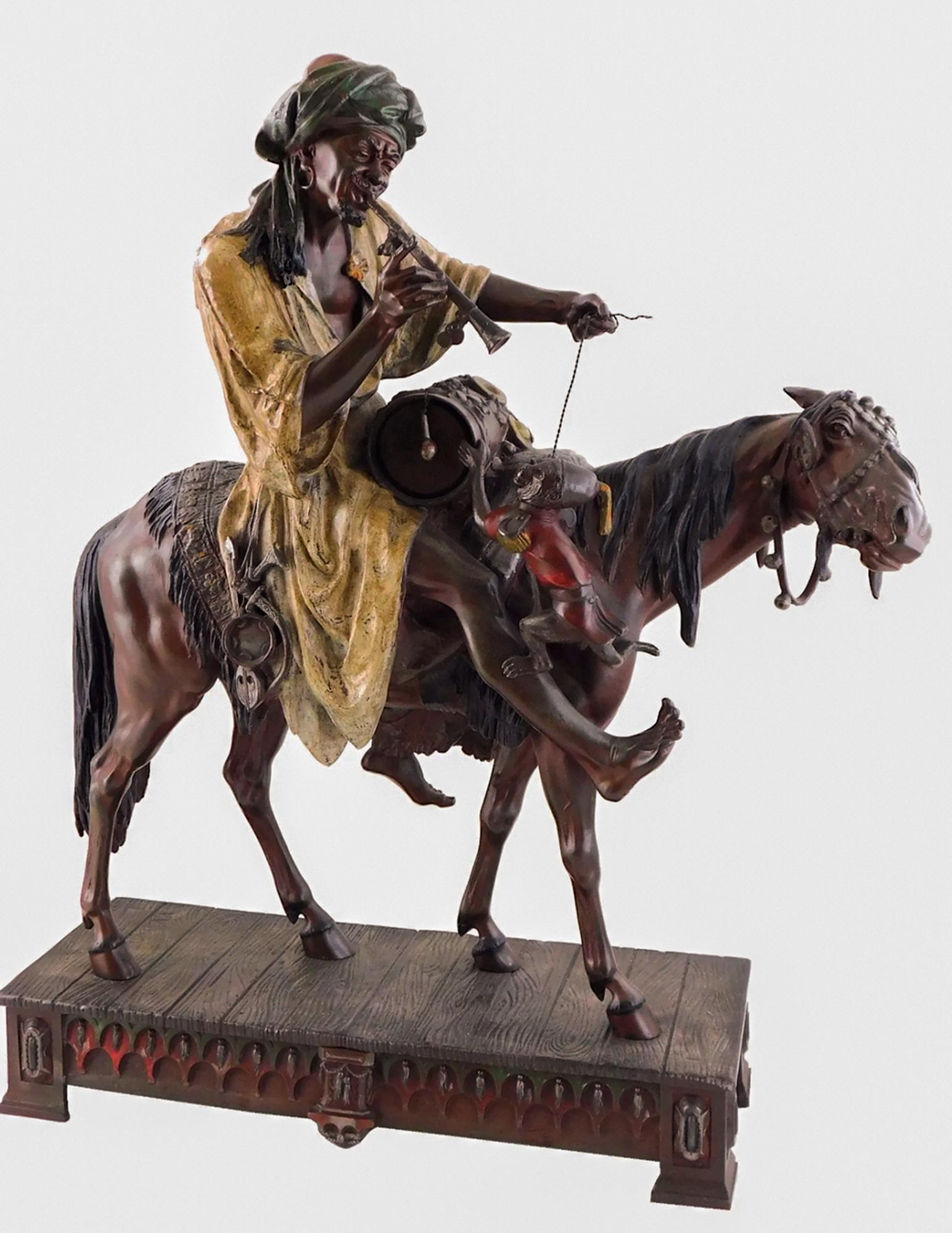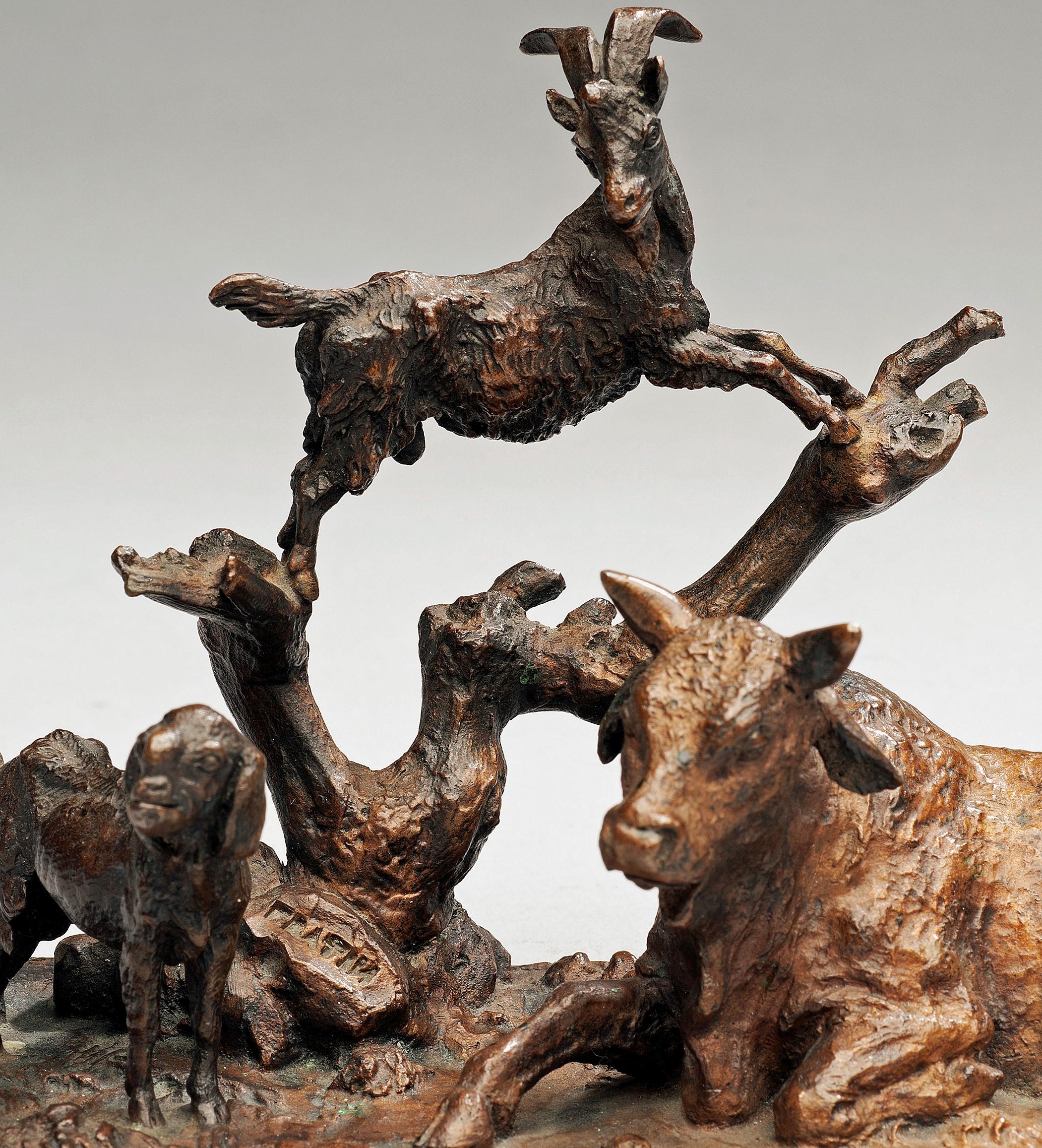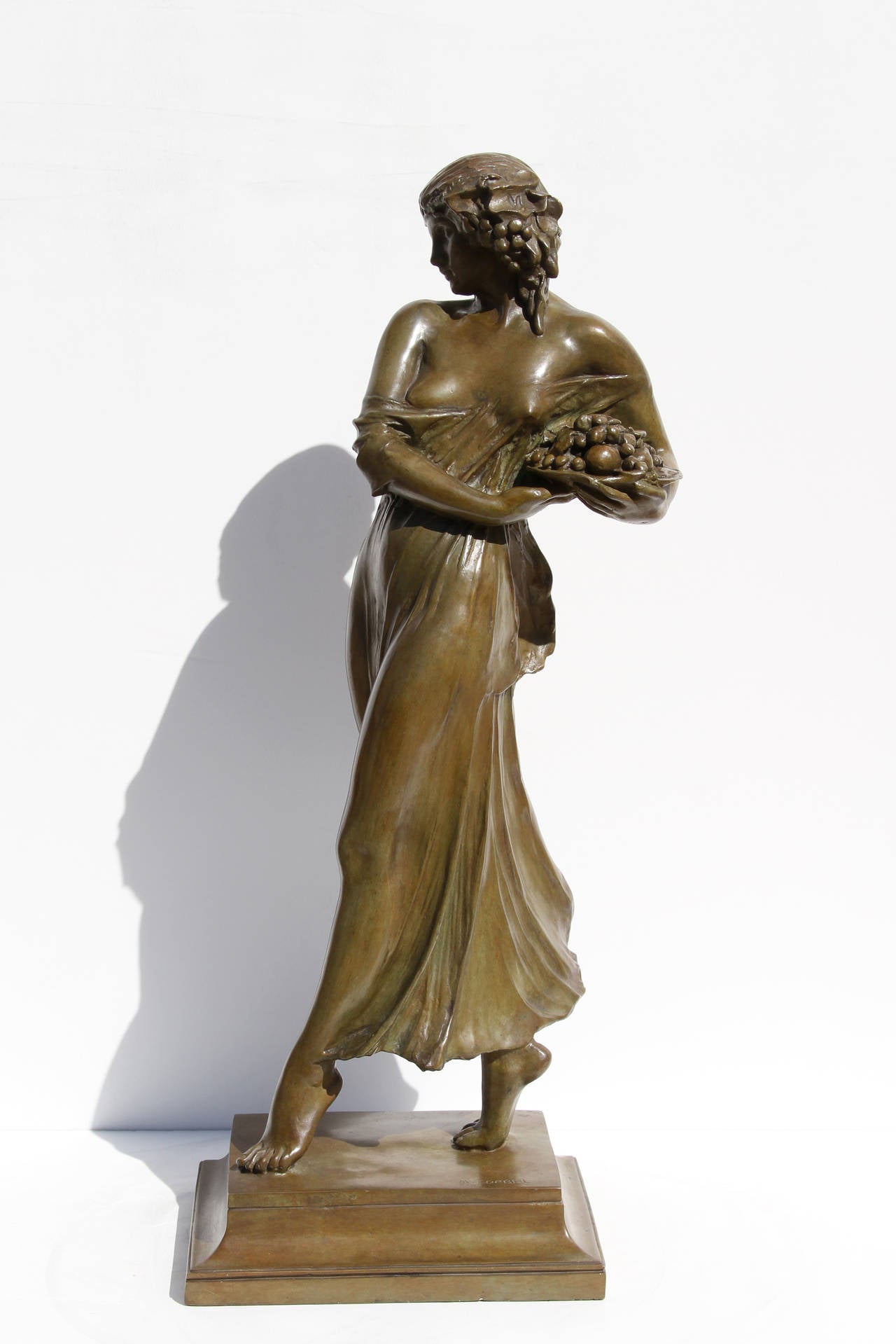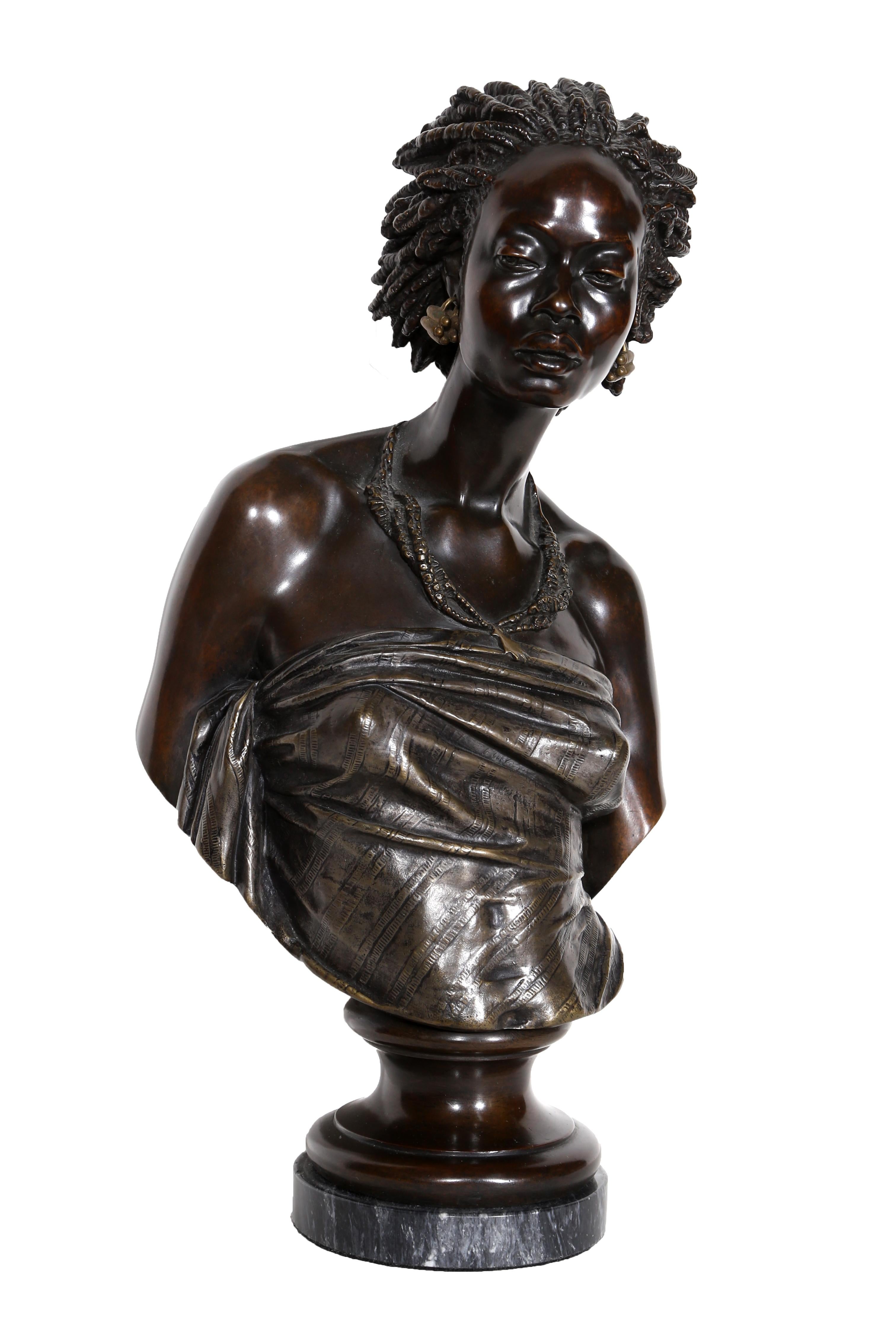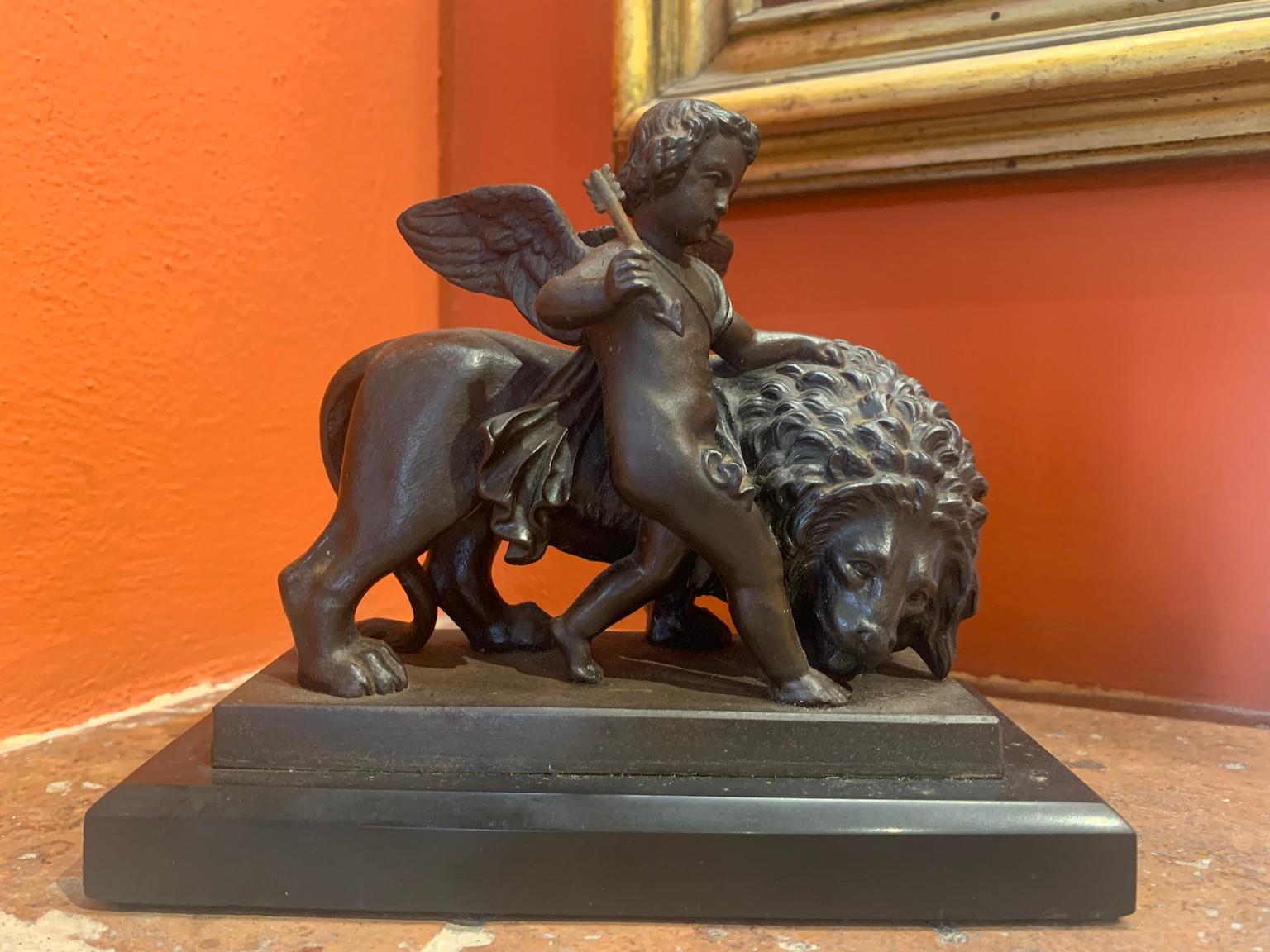Items Similar to Antique Exceptional Bronze Draft Horse by Pierre Jules Mêne (French, 1810-1879)
Want more images or videos?
Request additional images or videos from the seller
1 of 13
Pierre Jules Mêne Antique Exceptional Bronze Draft Horse by Pierre Jules Mêne (French, 1810-1879) Circa 1860s
Circa 1860s
About the Item
Antique Horse Bronze
Exceptional Bronze of a Draft Horse
Pierre Jules Mêne (French, 1810-1879)
Circa 1860s
4 3/4 (W) x 3.25 (H)
As Mêne personally oversaw the fabrication of each one of his pieces and was obsessive about quality, this little bronze is truly superb. The casting is highly refined and clear with minute details with deep, warm patina. This is a ridiculously fine bronze in a small package.
Pierre Jules Mêne (1810-1879), aka P.J. Mêne, was the son of a metalsmith, and received his earliest teaching on sculpture and foundry work from his father. Although mostly self-taught, having never attended any of the prestigious art schools, Mêne was also influenced by the painters Edwin Landseer of England with his expressive sentimentality, as well as Carle Vernet of France, in capturing spirit, grace and compositional beauty in sculptural form. Mêne began his career and earned his living by doing small jobs with metals such as furniture adornments and clock decorations.
Ultimately, P. J. Mêne was one of its earliest pioneers and subsequently became one of the most prolific, and probably the best-known, animalier sculptors. Like so many animalier of the day, Mêne's early studies were made at the Jardin des Plantes in Paris, where he developed his great talent for animal sculpture. Mêne did not sculpt statues, but rather bronze statuettes most frequently of domestic and farm animals at rest, (horses, dogs, cows, bulls, sheep, and goats). His favorite subject was the horse, of which he is considered to be the master at portraying. Next to horses, Mêne modeled many sculptures of dogs, both at work and at play. He created bronze sculptures ranging from animal portraits, to combat groups, to domestic animals, and equestrian groups of both racing and hunting.
Mêne's earliest works reflected Antoine-Louis Barye's influence, but in contrast with the romantic style of Barye, Mêne excelled in realistic portrayals of animals, sculpting each in their natural habitat, capturing fleeting movements and delicate details.
Generally, his sculptures were portraits with a hint of human personality. Mêne was praised for his "perfection in modeling the figures of animals, and for the truth and beauty of his representations." He worked in the Juste Milieu, blending romantic and naturalist elements while retaining a degree of traditionalism.
Beginning in 1838 Mêne began work at his own foundry, casting his own works and later also those of his son-in-law Auguste Cain. He became absorbed in the meticulous work of casting and chiseling and ensured that they were always checked for quality, color, and finish before they were allowed to leave the foundry. Each cast was of the highest quality and finest patinas. The last cast of an addition was edited as sharply as the first, and he was meticulous in the after work of his bronze casts, chiseling the extremely fine details. His bronzes were signed in block letters "P. J. Mêne" with no foundry marks. Declining many offers to do monuments, Mêne instead concentrated on his successful business of producing and marketing his very popular bronze sculptures. His only sculpture acquired by the State of France during his lifetime was the bronze Mounted Huntsman and His Hounds.
Auguste Cain, who continued Mêne's foundries from 1879 to 1892. Subsequently, Mêne's models were sold to the Barbedienne and Susse Freres Foundries which cast well into the 20th century. Though of fine quality, these later casts by Barbedienne and Susse Frères do not have the vitality and attention to detail that Mêne achieved on the casts from his own foundry.
Charming and charismatic, Mêne was accepted socially within the various French artistic communities. He was just as comfortable entertaining the intellectuals of Paris as he was with his apron on among his foundry workers. Through his notable charm, he drew the finest craftsmen to work for him in his foundry and his home became a fashionable meeting place for the painters, sculptors, and musicians of Paris.
It was in 1838 when he first exhibited a bronze statuette at the Paris Salon. From that time on, Mêne exhibited regularly until his death, ultimately receiving four awards from the Salon. Many of Mêne’s subjects were shown to the general public in this popular showcase where acclaim and criticism could be judged before including the subject in his general Oeuvre. This also served to establish public awareness of his new works and provides a useful reference when dating the origin of a particular cast.
In 1861 Mêne was awarded the Cross of the Legion d'Honneur in recognition for his contributions to art. He exhibited in England at the Great Expositions of 1855, 1867 and 1878, where he was praised as the "Landseer" of sculpture.
Mêne died on 20 May 1879 in Paris, France. He is remembered as one of the finest, and certainly the most prolific, animalier sculptors of all time.
Today, his works are held in the collections of the Louvre Museum in Paris, the National Gallery of Art in Washington, D.C., and the Courtauld Institute of Art in London, among others.
- Creator:Pierre Jules Mêne (1810 - 1879, French)
- Creation Year:Circa 1860s
- Dimensions:Height: 3.25 in (8.26 cm)Width: 4.75 in (12.07 cm)Depth: 2.25 in (5.72 cm)
- Medium:
- Movement & Style:
- Period:
- Condition:This remarkably refined bronze is in excellent condition.
- Gallery Location:SANTA FE, NM
- Reference Number:1stDibs: LU1408211253172
About the Seller
5.0
Platinum Seller
These expertly vetted sellers are 1stDibs' most experienced sellers and are rated highest by our customers.
Established in 1995
1stDibs seller since 2020
90 sales on 1stDibs
Typical response time: 1 hour
- ShippingRetrieving quote...Ships From: Santa Fe, NM
- Return PolicyA return for this item may be initiated within 2 days of delivery.
More From This SellerView All
- Antique Bronze Miniature Barnyard with a Bull, Sheep & Goat circa 1860, FranceBy Christophe FratinLocated in SANTA FE, NMAntique Bronze Miniature Barnyard Scene (Cow, Sheep & Goat) Christophe Fratin (France, 1801-1864) Sand cast bronze 5 3/4 x 4 1/4 x 2 1/4 inches Highly refined and sensitively modeled miniature bronze representing a small herd of cattle, sheep and cattle on the terrace. Despite its small size, this bronze offers a complete view of a small herd of livestock: a bull is lying in a landscape near a sheep and a goat climbing a tree above a rocky mound. Here we find the skillful hand of the animalier sculptor Christophe Fratin (French, 1801-1864), immensely famous in the 19th century for his thoughtfully crafted animal...Category
1840s Romantic Figurative Sculptures
MaterialsBronze
- Antique 19th century Bronze Dog Portrait of a Maltese on a Marble BaseLocated in SANTA FE, NMAntique Bronze Dog Portrait of a Maltese on a Marble Base French 19th century 1/2 x 8 x 5 1/2 inches The chiseled bronze has a nuanced, rich brown patina depicting a Maltese in the round, seated on a quadrangular marble base decorated with very fine gilt bronze flowers and fluted feet. Napoleon III, Louis XVI style. Based on a model by Jacques Caffieri for the Prince de Condé in 1773. (More images to be added.) Executed during the nineteenth century, this figure is fully in line with the eclectic taste of the reign of Napoleon III. Indeed, the Empress Eugenie brought the Louis XVI style up to date in her castle of Compiègne. Jacques Caffieri is one of the most famous bronze smiths of the eighteenth century. In 1715 he was admitted as a master caster and chiseler, and worked almost exclusively for the crown castles...Category
19th Century Rococo Figurative Sculptures
MaterialsMarble, Bronze
- Antique Dog: Bulldog Playing with a Mouse- Henri Émile Adrien Trodoux ca. 1870sLocated in SANTA FE, NMAntique Bronze Dog Bulldog Playing with a Mouse on Sheaves of Wheat Henri Émile Adrien Trodoux (1815-1881) 6 1/8 x 3 7/5 inches Signed on the terrace Henri Émile Adrien Trodoux (Fre...Category
Mid-19th Century Realist Figurative Sculptures
MaterialsBronze
- Antique Bronze Portrait Draft Horse by Isidore Jules Bonheur (France, 1827-1901)By Isidore Jules BonheurLocated in SANTA FE, NMAntique Bronze Portrait of a Draft Horse Isidore Jules Bonheur (France, 1827-1901) Circa 1840s Cast bronze mounted on a rectangular plinth atop a marble s...Category
1870s Realist Figurative Sculptures
MaterialsBronze
- Rare, Antique, Life-Size Dog Bronze of a Chihuahua "Lydie" Charles Valton. 1890sBy Charles ValtonLocated in SANTA FE, NMAntique Bronze Dog Sculpture Chihuahua "La Petite Belle Lydie" Charles Valton (French, 1851-1918) Circa 15 1/2 x 10 1/4 x 7 Lydie is a Chihuahua making her a very rare image from ...Category
Late 19th Century Realist Figurative Sculptures
MaterialsBronze
- Antique Bronze Dog Portrait of a Cavalier King Charles "Thigley" circa 1905Located in SANTA FE, NMAntique Bronze Dog Portrait of a Cavalier King Charles "Thigley" French School (possibly Franck Burty Haviland) Lost wax bronze casting Circa 1910 5 7/8 x 9 x 3 1/4 A sophisticated bronze casting of a Cavalier King Charles spaniel made in lost wax casting (cire perdue) from the beginning of the 20th century by Valsuani Foundry. This an unusual bronze approached in its aesthetic that’s reminiscent of the work of great animal sculptors of the second half of the 19th century except in this presentation which is more avant-garde for the time with a much looser, more impressionistic execution. The patina is a superb bronze color, brown and slightly greenish, going in places towards a more antique green. The attitude of the dog is extremely well and sensitively rendered with the placement of material unlike the renderings of a bronze by Barye...Category
Early 1900s French School Figurative Sculptures
MaterialsBronze
You May Also Like
- Arthur Waagen’s 'The Nomadic Virtuoso’ in Patinated metalBy Arthur WaagenLocated in New York, NYEncounter the resonant blend of motion and music in 'The Nomadic Virtuoso,' a captivating painted metal sculpture by Arthur Waagen. This art piece from the late 19th century depicts ...Category
Late 19th Century Romantic Figurative Sculptures
MaterialsBronze
- Three Putti, Art Nouveau Bronze by Affortunato GoryBy Affortunato GoryLocated in Long Island City, NYThis Bronze sculpture, by the French Art Deco/Art Nouveau artist Affortunato Gory (d. 1925) , is a beautiful moment of three putti joyously dancing together. Their arms are joined a...Category
Early 20th Century Romantic Figurative Sculptures
MaterialsBronze
- Woman Carrying Grapes, Art Nouveau Bronze by Mario KorbelBy Mario Joseph KorbelLocated in Long Island City, NYThis bronze sculpture by Mario Joseph Korbel is a stunning portrayal of a woman in the Romanticist style. Korbel began studying sculpture in his homeland of Czech Republic, and cont...Category
20th Century Romantic Figurative Sculptures
MaterialsBronze
- Venus Africaine, Bronze by Charles CordierLocated in Long Island City, NYVenus Africaine by Charles Cordier, French (1827–1905) Bronze Sculpture, signature inscribed Size: 15 x 9 x 5 in. (38.1 x 22.86 x 12.7 cm)Category
Late 19th Century Romantic Figurative Sculptures
MaterialsBronze
- Allegorical mythological figurative bronze from the 19th centuryLocated in Florence, ITMarble-based bronze statuette depicting Cupid, holding an arrow in his hand, walking caressing a lion's mane, lowered in the act of affectionately licking his little foot. The subjec...Category
Mid-19th Century Romantic Figurative Sculptures
MaterialsMarble, Bronze
- L'Hiver, Winter, Bronze Sculpture, Lost Wax Method , Romantic, Florence, ItalyBy Matthew James CollinsLocated in Houston, TXL'Hiver, which is French for winter. An evocative title which pretty much explains the piece. Number 1 out of a production of Seven. Artist Statement: I am very happy to announce that two of my bronze works are now available in a limited edition of 7. The first one, shown above, is my vision of Eros. He is more popularly known in the Roman interpretation of a chubby baby or young boy with an bow and arrow. I have always been more intrigued with the original Greek embodiment of the this deity as a young man. More than the god of love, Eros was a personification of the power of creation. He was balanced by his antithesis was Thanatos, that of destruction. In fact, Thanatos is currently in the design process. This work will exist in an edition of 7 and 2 artist's proofs. Each piece is hand chased by myself and I apply the patina as well. The sculpture was created using the Lost Wax...Category
2010s Romantic Figurative Sculptures
MaterialsBronze
Recently Viewed
View AllMore Ways To Browse
French 1810
Used Drafting
Antique French Bronze Sculpture Art Sculptures
Antique Horse Sculptures
Antique Horse Sculpture
Used Drafting Furniture
Antique Sculpture London
Antique Sculptures London
Jules Bronze
Horse Sculpture French
French Horse Sculpture
Antique Sculpture Gallery
French Horse Bronze
Antique Horse Bronze
Antique Bronze Horses
Antique Bronze Horse
Antique Bronze Horse Bronze
French Animalier Sculpture
